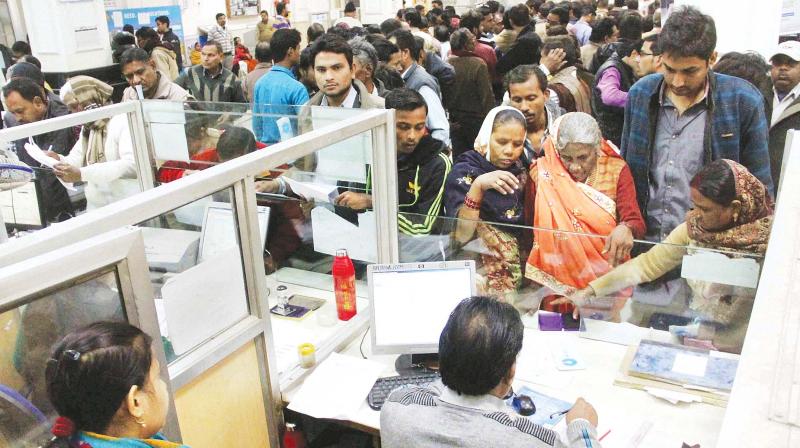Demonetisation: The mother-in-law of all scams?
Assets like land and gold, bought with black money have not been included in the Rs 14 lakh crore tally.

The dramatic announcement by the Prime Minister on November 8, 2016 demonetising Rs 500 and Rs 1000 notes from midnight of the same day electrified the national mood and altered the paradigm of public life. However, one must remember that not all black money is a result of corruption although all corruption results in black money.
If a government servant gets a bribe for a favour done then he generates black money as that amount is not taxed. But if you go to a doctor and pay him Rs 500 in cash without receipt or buy petrol without bill then you are also generating black money, but without the involvement of corruption.
All untaxed money is also not black money. For instance, In India agricultural income is not taxed and it constitutes nearly 20 per cent of our GDP. So we need to be cautious when looking at the black money scenario.
It has been seen over the years that the Reserve Bank of India (RBI) favours printing of higher denominations currency even though the mass of poor people transact only in lower denominations.
In 2005-06, around 57 per cent of the Rs 4 lakh crore coins and notes introduced in circulation comprised of Rs 500 and Rs 1,000 notes. But by 2010-11, the share of the higher notes had risen to 79 per cent of the total value of Rs 10 lakh crore notes in circulation and now by 2015-16 it is 85 per cent or 14.2 lakh crore of the total value of Rs 16.6 lakh crore in circulation.
This implies that more and more of the denominations in circulation are skewed to higher value notes when the mass of people need lower value currency. It is common knowledge that the very high denominations facilitate transactions in black money as they are easier to carry.
So why the higher order notes like Rs 500 and Rs 1000 were preferred is an issue that needs investigation. If it was deliberate to facilitate hoarding of black money then those responsible need to be punished.
It is intriguing that an even higher denomination note of Rs 2000 has been introduced now. Hopefully the government will phase out this currency note and introduce Rs 200 and stop with Rs 500 notes.
The other issue is regarding the new size of the Rs 500 and Rs 2000 notes, which requires re-calibration of the ATMs. This is puzzling. Why go for new sizes when what is needed are notes with a new series. This so called recalibration of nearly two lakh machines has caused avoidable problems for the public.
The government should have printed and stored adequate number of lower denomination currency notes like Rs 10, Rs 20, Rs 50 and Rs 100 for distribution instead of printing the Rs 2000 notes after demonetisation to make people’s lives easier.
It should have also involved RBI registered NBFCs like Sundaram Finance/Shriram Chits as well as MFs—who all have millions of investor points/locations. Even some large FMCG companies like Unilever/Amul/ITC , which have huge distribution networks, could have been considered. These could have been declared as Banking Correspondents [for a short period] and asked to facilitate distribution of currency.
It will be interesting to see how much of this Rs 14.2 lakh crore comes back to the banks. One must remember that this does not include assets like land or gold bought using black money.
While the RBI has claimed that Rs 12.44 lakh crore has already come in by December 10, the ministry is not convinced as there could be double counting. If the amount coming in is more than Rs 14.4 lakh crore, then it will be the mother- in- law of all scams.
In 2012 the then Finance Minister, Pranab Mukherjee had presented a White Paper in Parliament on black money that stressed the need for limiting cash holdings by individuals.
Political parties are known to disburse cash to voters prior to elections and so a huge amount of cash is held and transported from one location to another at this time. Even the fifth SIT report to the Supreme Court has suggested an upper limit of Rs 15 lakhs on cash holding by individuals.
The government should pass the Mudra Act, so far resisted by the RBI and Finance Ministry as banks provide only 50 to 55 per cent of aggregate credit needed in the economy and the remaining is provided by NBFCs/Chits/Moneylenders and others.
With rates being as high as 6 to 8 per cent a month in the open market, the Act will facilitate integrating our credit markets, including the last mile moneylender and reduce interest rates. Also, the time has come for the government to focus on illicit money stashed abroad, which is estimated to be around a trillion USD.
Finance & Control UTI Chair Professor in Capital Market Studies

